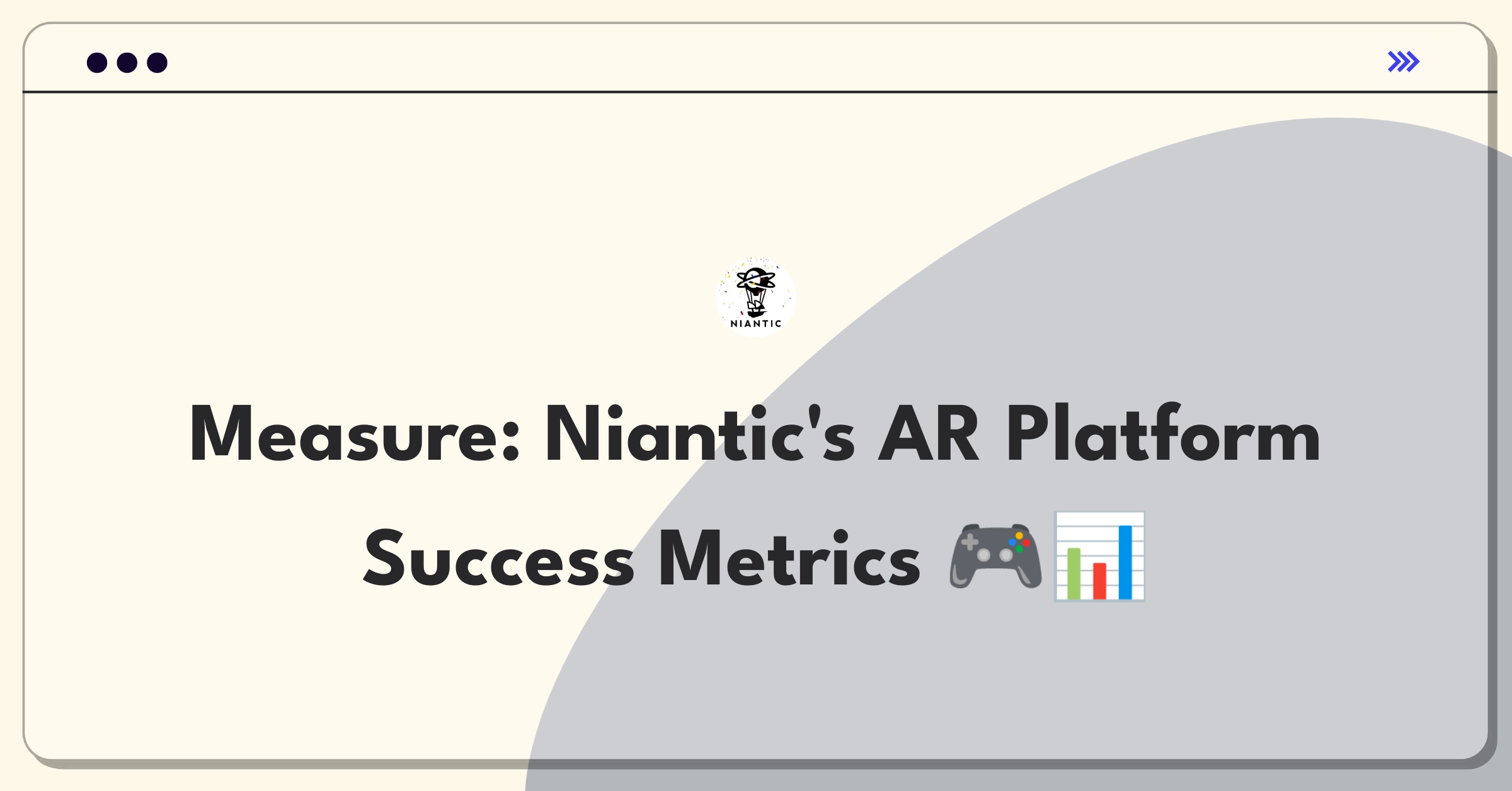Introduction
Evaluating Niantic's real-world game development platform requires a comprehensive approach to product success metrics. To address this challenge effectively, I'll follow a structured framework that covers core metrics, supporting indicators, and risk factors while considering all key stakeholders. This approach will help us understand the platform's performance, user engagement, and overall impact on Niantic's business objectives.
Framework Overview
I'll follow a simple success metrics framework covering product context, success metrics hierarchy.
Step 1
Product Context (5 minutes)
Niantic's real-world game development platform is a sophisticated toolset that enables developers to create location-based augmented reality (AR) games and experiences. This platform leverages Niantic's expertise in AR, geospatial data, and mobile gaming to provide a robust foundation for building immersive, real-world interactive applications.
Key stakeholders include:
- Game developers: Seeking to create engaging AR experiences efficiently
- End users: Looking for innovative, location-based gaming experiences
- Niantic: Aiming to expand its ecosystem and revenue streams
- Advertisers and partners: Interested in reaching engaged audiences in real-world contexts
The user flow typically involves developers accessing the platform, utilizing its tools and APIs to create games, and then deploying these games to end-users who interact with the AR experiences in real-world locations.
This platform fits into Niantic's broader strategy of becoming the leading AR company by fostering a diverse ecosystem of location-based experiences. It expands beyond their in-house successes like Pokémon GO and Ingress.
Compared to competitors like Apple's ARKit or Google's ARCore, Niantic's platform differentiates itself through its focus on large-scale, outdoor AR experiences and its rich dataset of real-world locations and points of interest.
In terms of product lifecycle, the platform is in the growth stage, having moved beyond initial launch and now focusing on expanding its developer base and feature set.
Software-specific context:
- Platform/tech stack: Likely built on Niantic's proprietary AR engine and geospatial database
- Integration points: APIs for Unity and other game development engines
- Deployment model: Cloud-based services with local SDKs for developers
Subscribe to access the full answer
Monthly Plan
The perfect plan for PMs who are in the final leg of their interview preparation
$99.00 /month
- Access to 8,000+ PM Questions
- 10 AI resume reviews credits
- Access to company guides
- Basic email support
- Access to community Q&A
Yearly Plan
The ultimate plan for aspiring PMs, SPMs and those preparing for big-tech
- Everything in monthly plan
- Priority queue for AI resume review
- Monthly/Weekly newsletters
- Access to premium features
- Priority response to requested question


.png)